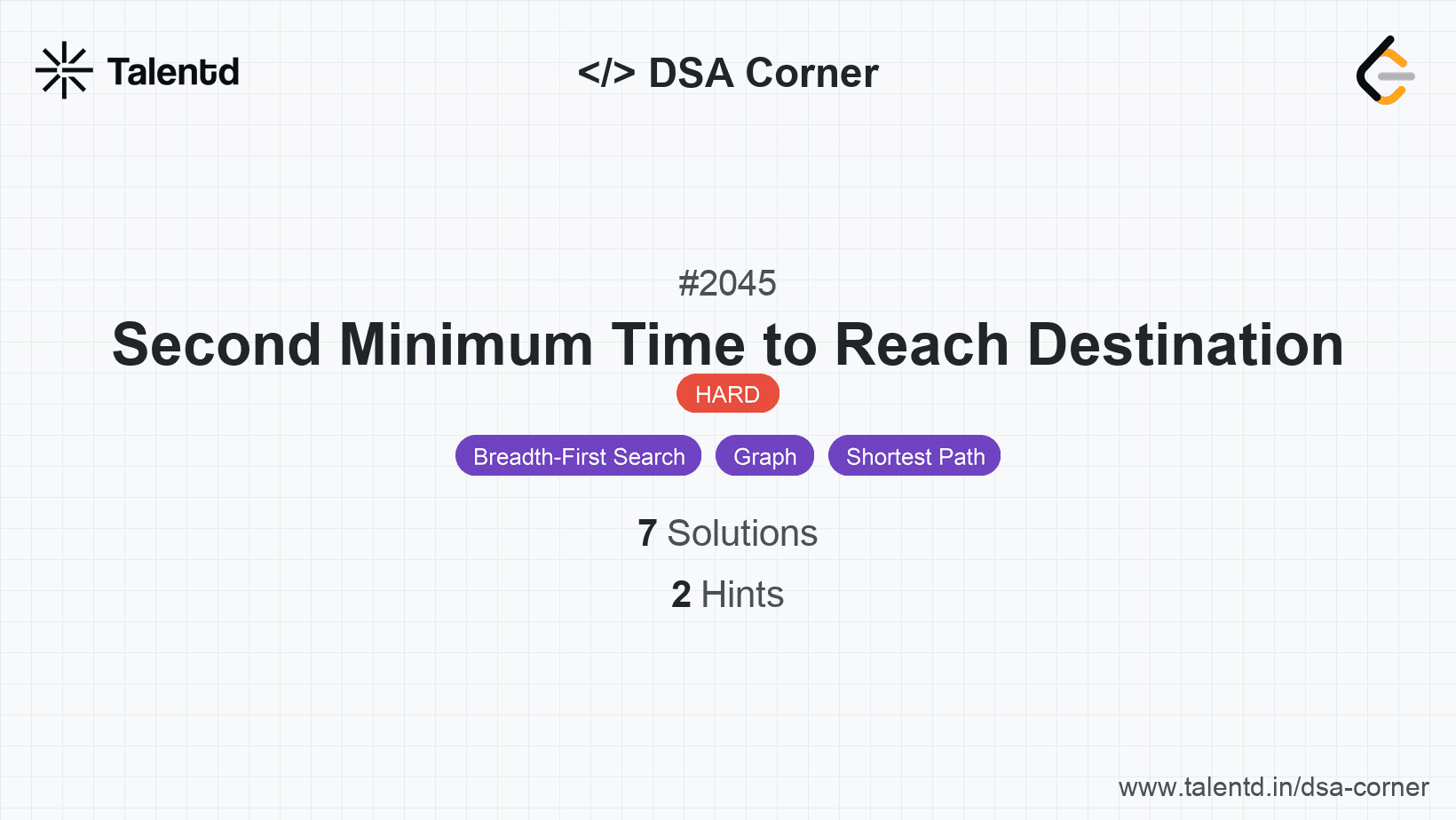
Sponsored
Sponsored
This approach involves using a priority queue to simulate a modified version of Dijkstra's algorithm, aiming to track both the shortest and second shortest path times to the last node. The cost of each step is affected by traffic signal delays, calculated based on the cumulative time spent traveling.
The time complexity is O(E log V), where E is the number of edges, and V is the number of vertices, due to the priority queue operations. The space complexity is O(V + E) due to the storage of the adjacency list and the min_time/second_min_time arrays.
1#include <stdio.h>
2#include <stdlib.h>
3#include <limits.h>
4
5typedef struct {
6 int *data;
7 int size;
8 int capacity;
9} intVector;
10
11void push(intVector *vec, int val) {
12 if (vec->size == vec->capacity) {
13 vec->capacity *= 2;
14 vec->data = realloc(vec->data, vec->capacity * sizeof(int));
15 }
16 vec->data[vec->size++] = val;
17}
18
19int pop(intVector *vec) {
20 return vec->data[--vec->size];
21}
22
23int secondMinimum(int n, int edges[][2], int edgesSize, int time, int change) {
24 intVector *graph = malloc((n + 1) * sizeof(intVector));
25 for (int i = 1; i <= n; ++i) {
26 graph[i].data = malloc(10 * sizeof(int));
27 graph[i].size = 0;
28 graph[i].capacity = 10;
29 }
30
31 for (int i = 0; i < edgesSize; ++i) {
32 push(&graph[edges[i][0]], edges[i][1]);
33 push(&graph[edges[i][1]], edges[i][0]);
34 }
35
36 int *first_min = malloc((n + 1) * sizeof(int));
37 int *second_min = malloc((n + 1) * sizeof(int));
38
39 for (int i = 1; i <= n; ++i) {
40 first_min[i] = INT_MAX;
41 second_min[i] = INT_MAX;
42 }
43 first_min[1] = 0;
44
45 int pq[200000][2];
46 int pq_size = 0;
47 pq[pq_size][0] = 0;
48 pq[pq_size++][1] = 1;
49
50 while (pq_size > 0) {
51 int curr_time = pq[--pq_size][0];
52 int node = pq[pq_size][1];
53
54 for (int i = 0; i < graph[node].size; ++i) {
55 int neighbor = graph[node].data[i];
56 int wait_time = 0;
57 if ((curr_time / change) % 2 == 1) {
58 wait_time = change - (curr_time % change);
59 }
60 int new_time = curr_time + wait_time + time;
61
62 if (new_time < first_min[neighbor]) {
63 second_min[neighbor] = first_min[neighbor];
64 first_min[neighbor] = new_time;
65 pq[pq_size][0] = new_time;
66 pq[pq_size++][1] = neighbor;
67 } else if (new_time > first_min[neighbor] && new_time < second_min[neighbor]) {
68 second_min[neighbor] = new_time;
69 pq[pq_size][0] = new_time;
70 pq[pq_size++][1] = neighbor;
71 }
72 }
73 }
74
75 free(first_min);
76 free(second_min);
77 for (int i = 1; i <= n; ++i) {
78 free(graph[i].data);
79 }
80 free(graph);
81 return second_min[n];
82}The C implementation approximates a priority queue using a simple array. Key data structures include dynamically-sized arrays to manage dynamic connections across nodes. Methods for adjusting travel times based on traffic signals remain consistent with other implementations, preserving overall algorithm correctness.
This approach leverages a Breadth-First Search (BFS) to explore paths in level order, carefully managing path times with respect to traffic signal cycles. Time values are stored to identify both the shortest and second shortest paths throughout the search.
The time complexity is O(E) due to the traversal of all edges and the space complexity is O(V + E) for graph and time-tracking arrays.
1const secondMinimum = (n,
This JavaScript solution employs BFS with time management using traffic signal states to uncover the minimum and second minimum path costs. Paths are explored level by level, with state transitions manipulated using queue operations.